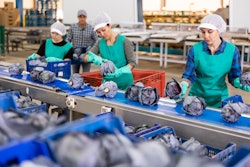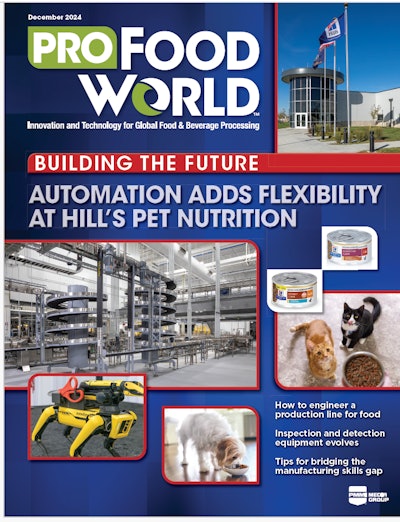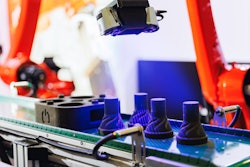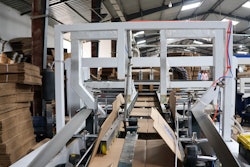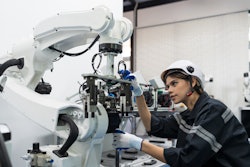Bryan Griffen is the President of Griffen Executive Solutions LLC. He was previously Senior Director of Industry Services for PMMI: The Association for Packaging and Processing Technologies, and he held a number of roles for Nestlé during his many years there.
The modern food and beverage manufacturing environment is changing—fast. As automation becomes increasingly central to production efficiency, quality assurance, and operational flexibility, the skill requirements for today’s workforce are evolving just as quickly. Nowhere is this more evident than on the production floor, where line operators and maintenance personnel are navigating a shift from manual, repetitive tasks to technology-enabled, value-added roles.
This transformation doesn’t signal the disappearance of the human workforce—it marks a new chapter in how people and machines collaborate. Automation isn’t replacing people; it’s freeing them. But for companies to realize the full benefits of this evolution, they must commit to one essential principle: continuous training and upskilling.
This article concludes our six-part series on workforce strategy in food manufacturing. In previous columns, we explored recruiting and retention, the skills gap, and knowledge transfer. In this final installment, we turn our attention to preparing operations teams for the automated future—and why investing in people is just as critical as investing in technology.
The automation shift: what it means for operations teams
For decades, the focus of many frontline manufacturing roles was hands-on and repetitive. Manual changeovers, mechanical adjustments, and trial-and-error troubleshooting were daily realities. While foundational mechanical skills are still important, today’s most successful maintenance teams and production operators are those who can work seamlessly with connected equipment, digital diagnostics, and intelligent automation.
The skills required in this new landscape are broader and deeper. Operators must now understand how to interface with modern HMIs, interpret sensor data, and respond to system feedback. Maintenance techs are expected to navigate PLCs, smart devices, and networked systems—skills once reserved for engineers. The age of automation demands a workforce that blends mechanical intuition with technical fluency.
This shift is not theoretical—it’s happening now. One powerful example comes from my own experience at Nestlé. We had a cooking and extrusion process that proved too complex for basic automation to handle reliably. Operators, through constant attention and manual tweaks, managed to keep it running relatively smoothly. Recognizing the inefficiency, I helped design an AI-based system, augmented by new sensors, to learn and mimic the operators’ decision-making patterns. Within a month of deployment and training, the system was running the process independently, freeing operators to focus on broader system optimization and boosting overall plant efficiency. That’s the kind of transformation we’re talking about—where smart automation multiplies human impact rather than diminishing it.
The tools driving the change
Several technologies are redefining the shop floor and setting new expectations for operator and technician skillsets:
- Vision systems and intelligent sensors are improving quality control, offering real-time data and early detection of defects.
- Modern HMIs and digital interfaces allow for deeper process visibility and quicker, more accurate decision-making.
- AI-enabled troubleshooting tools help teams resolve issues more efficiently by recommending solutions based on patterns and data history.
These tools don’t just add complexity—they add opportunity. With the right training, line workers can become confident problem-solvers who actively improve performance. Maintenance personnel can shift from reactive firefighting to proactive system optimization.
Upskilling the workforce: resources and framework
Supporting this shift requires more than just equipment upgrades—it requires investment in people. Fortunately, several industry efforts are underway to help:
- PMMI’s Mechatronics Certification Program provides foundational training for maintenance staff transitioning to automation-rich environments. It covers mechanical, electrical, and control system integration in a modular, scalable format.
- OMAC continues to support discrete manufacturing environments with training resources, particularly where machine-to-machine communication and interoperability are priorities.
- The OpX Leadership Network is currently developing operator training guidance specifically aimed at helping CPG companies build workforce capability aligned with modern manufacturing needs.
These programs help companies avoid the pitfalls of siloed knowledge by promoting consistent, role-relevant skill development.
But training isn’t just about access to information—it’s about creating a culture where learning is expected, supported, and rewarded. The most successful companies don’t treat training as a one-time onboarding task. They treat it as a career-long journey. From microlearning modules and internal certifications to mentoring and stretch assignments, companies must build internal ecosystems that continuously develop employee potential.
Redefining roles, not eliminating them
A common misconception about automation is that it eliminates jobs—but in reality, it redefines them. As machines take over the most repetitive and labor-intensive tasks, employees are empowered to take on responsibilities that require critical thinking, adaptability, and collaboration.
In this future-forward environment, line workers become system stewards. Maintenance techs evolve into automation specialists. Operators become analysts: interpreting data, responding to predictive alerts, and contributing to continuous improvement initiatives.
This doesn’t mean everyone needs to be a programmer or a data scientist. But it does mean that all frontline employees need to be comfortable interacting with digital systems, interpreting machine behavior, and applying their expertise in new ways.
Final thoughts: training is the new ROI
The companies that succeed in the age of automation will not be those with the most robots or the most AI. They’ll be the ones who invest in training—not as a compliance exercise, but as a strategic enabler. Training is how you scale technology. It’s how you future-proof your operations. And it’s how you build the workforce of tomorrow.
Automation is a catalyst, not an endpoint. In the food and beverage industry, it’s reshaping what’s possible for people on the plant floor. By upskilling today’s workforce, we’re not just preparing for the future, we’re building it.
As we wrap up this workforce series, one truth stands out across every topic we’ve covered: People are still at the heart of manufacturing. The tools may change, but the need for skilled, curious, and committed workers endures. Our job now is to give them the tools—and the training—to thrive.
If you’re looking for actionable strategies to support your own career growth—or to help your team build theirs—check out my blog at www.GriffenExecSolutions.com/blog. This past month, we’ve focused on identifying skill gaps and creating personal development plans to close them. You’ll find practical tools and insights that align closely with today’s discussion. While you’re there, I encourage you to sign up for my new monthly blog updates—each issue includes fresh resources, success stories, and leadership tools you can use right away.








